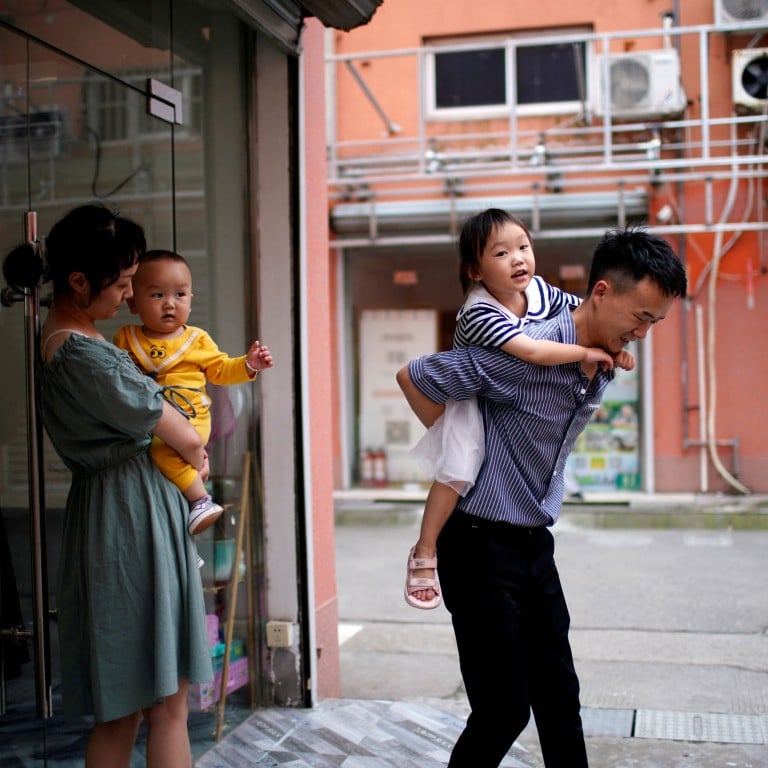
Explainer | China’s ‘two sessions’: 7 economic points to look out for as annual meetings get under way
- From unveiling the annual economic growth target to addressing demographic changes and high unemployment, China’s leadership is looking to instil confidence
- A new crop of economic regulators, armed with a new reform agenda, will also be named during annual sessions of the National People’s Congress and the National Committee of the Chinese People’s Political Consultative Conference
China’s legislature and political advisory bodies commence their annual meetings on Saturday. During the assembly, China’s top leadership will complete a twice-a-decade reshuffle and set the tone and budget for the year’s economic work.
President Xi Jinping is set to begin his unprecedented third term as president during the meetings, and they come as China’s economy and society at large are looking to get back on track after nearly three years of living with the crippling effects of zero-Covid measures.
China is also still facing particularly strong headwinds to its goals, both from internal and external sources, and the range of factors at play makes this year’s agenda-setting “two sessions” gatherings especially crucial for mapping out policy intentions.
Here are seven significant economic points to look out for.
1. Economic growth targets
The anticipated growth in China’s gross domestic product (GDP) will be arguably the most attention-grabbing target this year.
“If the government sets a high target, the pressure would be on officials to ramp up growth, meaning companies may want to revise assumptions for revenue growth in 2023,” the consultancy said.
“Conversely, a less-ambitious target would put less pressure on officials, giving them more bandwidth to focus on medium- and long-term structural issues.”
It is also well expected that Beijing will raise the fiscal deficit from last year’s 2.8 per cent of GDP to 3 per cent of GDP, with more fiscal support being used to bolster growth.
2. New economic regulators, new reform agenda
New government officials will be appointed towards the end of the two sessions, including those who will oversee the country’s economic development.
China’s Xi Jinping vows ‘forceful’ reform of finance and technology sectors
3. Demographic challenges
While more ideas on ways to boost births are expected to be rolled out, extensive discussions on solutions for a rapidly ageing society could also arise – how will China accommodate the needs of the growing number of seniors both in urban and rural areas; whether or when China will delay its retirement ages; how will China deal with a shrinking workforce; and in what ways can China further tap into the demographic dividend, which reflects the economic growth potential resulting from shifts in a population’s age structure?
Mothers in China had 9.56 million babies last year – the lowest total in the nation’s modern history, and the first time the figure fell below 10 million.
4. Employment
Employment will remain a major challenge in efforts to stabilise the economy this year, especially for young adults, recent graduates and migrant workers.
Ways to promote equality in the labour market, as well as proposals to further legitimise freelance work, may also be discussed.
5. Risk control
China is gearing up to get its economic activities back on track this year while simultaneously trying to mitigate financial risks that could threaten precarious economic growth.
In addition, the weakening external market means a more complicated export outlook for one of China’s most important sources of economic growth.
China’s exports in 2023 weighed down by ‘very weak’ outlook, analysts say
6. Technological self-reliance
“There will be funding from the government for both public and private research bodies to engage in R&D, with the ultimate aim of achieving self-reliance in advanced technology,” said Iris Pang, ING’s chief China economist.
Late last month, Xi reiterated the crucial importance of core technologies and achieving self-reliance, and these have become increasingly prominent topics at high-level government meetings.
Analysts from Trivium China said they expect more concrete policy to support basic research, and this could include boosting R&D spending, cultivating research talent, and increasing cooperation between universities and tech companies to replace foreign technology.
7. Restoring confidence
A big question for China is how to restore business and consumer confidence, the lack of which strikes at the heart of domestic growth.
In the past two years, the tightening market regulations and hammering crackdowns, compounded by the draconian zero-Covid policy, have diminished confidence across the board – foreign and private firms are reluctant to invest, while consumers and households are reluctant to spend amid the obscurity surrounding economic recovery.
In the absence of predictability and stability, the market is closely watching what substantial signals will come out of the meetings – anything that might help restore confidence.

